See The Tool's Value Instead Of Its Cost
This company is embracing high-performance tooling on its turning centers. The "sticker shock" is no reason not to do this. In one case, though, the shop found a way to limit the cost of the tool and increase productivity at the same time.
On the production floor at Bradshaw Medical—a maker of surgical hand tools in Kenosha, Wisconsin—one of the most productive milling tools is not a mill at all. It’s a custom step drill. The drill doesn’t actually perform a milling
pass, but it has been a powerful facilitator to the milling operations.
In fact, the drill doesn’t even rotate. On Bradshaw’s Mazak Quick Turn multitasking lathe, the tool is held on centerline while the part spins, drilling a multi-diameter stepped hole into the center of the part. Because that same hole used to require three tools for center drilling, drilling and reaming, the new tool frees up two tool positions on the machine’s turret. By filling those tool positions with milling tools, the shop is now able to take advantage of both the live-tool capability and the Y-axis motion of the Mazak machine to perform the milling this part requires within the same setup as the turning. That means the part no longer has to be sent to a machining center for this rotary-tool work. Where the setup on the machining center used to consume capacity that created additional need to outsource some of the company’s machining demand, the pressure to outsource is now that much less.
Manufacturing manager Rich Czekalski says he resisted the $150 price tag for the customized drill at first, but now, given all of the benefits that flow from consolidating turret positions, the price seems more than reasonable.
Production personnel at Bradshaw have been looking at various turning center processes in this way—searching for other ways to save on the number of tools, even if it means spending a little more. The key to realizing the most value on any of these machines, multitasking or otherwise, is to maximize the value that each of the limited number of turret positions can deliver. Doing this often involves a more versatile and/or higher-performance tool, but Mr. Czekalski says both shop personnel and company management are getting better at not flinching at the cost of a valuable cutter. Though in the case of one tool that was modified in-house, the shop found that imaginative thinking allowed it to cut faster and consolidate tool positions, as well as economize on the tool at the same time.
Fear Factor
Bradshaw Medical’s machining area has been driven to rapidly become more efficient because the company itself is rapidly growing. The three-year-old manufacturer now has 70 total employees and 14 CNC machines. A new, larger facility will be ready in late 2010, but for now the company is constrained within its increasingly cramped current location. New machines that might be justified according to the company’s demand can’t be accommodated in the available floor space. Therefore, improving productivity with the existing machines is practically the only option for now.
One of the shop’s first experiences with increasing machine capacity by both reducing cycle time and consolidating tool positions involved a high-performance drill from Walter Titex. This tool increased the speed of the drilling operation and freed up two tool positions by overcoming the need for center drilling and reaming. However, the cost of the drill was high compared to the high speed steel tooling the shop had used, creating a psychological hurdle.
“No one wants to be the guy who blows up a $35 tool,” Mr. Czekalski says.
Now, the shop has become experienced with this tool and with other high-performance tools that are priced much higher. Optimal parameters have been found through fine-tuning the process, and the tools run routinely, without any incident, at the more aggressive speeds the shop now achieves. The initial fear was no reason not to proceed.
A tool that delivered even higher value out of a single turning center position was a multifunction cutter capable of face turning, drilling, boring and OD turning. Thanks to the versatility of this cutter, the shop is able to perform 90 percent of the machining for one particular part number using just this tool alone.
Cutting tool company Sumitomo provided this multifunction tool, as well as the custom step drill. Bradshaw ultimately came to this tool supplier with an idea for further cost saving and productivity improvement that would involve the shop customizing a particular tool on its own.
A Little More Slender
The machined part shown at the beginning of this article is a handle for a torque-limiting surgical hand tool. A critical machined hole running all the way through the stainless steel part is about 1/2 inch in diameter and 4 inches long.
The shop had been machining the 8:1 length-to-diameter hole using HSS tooling. The flexibility of HSS avoided the danger of sudden tool failure if chips bound up in the deep hole to cause cutting force to spike. However, cutting was slow.
Cutting faster would require carbide, but high-performance solid carbide tooling offering the toughness to reliably machine the deep hole would have been expensive. In fact, total cost for the full-size drill plus a pilot drill would amount to hundreds of dollars, Mr. Czekalski says.
A more economical solution would be a steel body with a replaceable carbide tip, but tooling such as this was difficult to find for such a long and slender hole. At this reach, Sumitomo offered the drill in sizes down to 13.5 mm in diameter. Bradshaw needed 13 mm.
Therefore, Bradshaw asked the company: Could the shop turn the body to size itself? Would Sumitomo provide support by customizing the insert for this different size?
Tool distributor Machinery & Factory Industrial Supply of Racine, Wisconsin facilitated the meeting between Mr. Czekalski and Sumitomo. The cutting tool maker agreed that removing 0.5 mm would not dramatically affect the functionality of the drill body. Custom inserts fitting the new size would cost about $100 apiece, but Mr. Czekalski thought this could be justified given the reduced cycle time and freed-up tool position that the custom tool would allow. Plus, the insert could be reground three times, making the overall cost-effectiveness that much greater.
Fear The Right Things
The newly modified tool has not yet been used, but Bradshaw programmer and machine operator Scott Wise has already used a similar tool on a deep hole in another part. With this tool, too, there was initial caution. Mr. Wise watched the turning center’s load meter nervously until he was convinced that the tool would perform without fail at the more aggressive parameters it made possible. With the custom-modified version of the new tool, he expects he will do the same—proceeding cautiously, even fearfully, until the tool proves itself repeatedly and begins to become commonplace for the shop.
Fear is no reason not to proceed—that’s the lesson that continues to be reinforced for Bradshaw as the company continues to make its turning machines more productive. High-value machines need high-value tooling in order to realize their value, and this is as true of advanced turning centers as any other type of machine.
In fact, the Bradshaw staff points out that the initial fear of using costly tooling was almost entirely misplaced. You get what you pay for, they say—meaning the cost is appropriate so long as the payoff is high. The shop shouldn’t necessarily wince at price tags, as natural as it may be to do so. Much more money is saved overall when the shop instead refuses to tolerate cycle times that are too long, or setups that make it difficult to meet the company’s growing customer demand.
Related Content
ANCA Introduces Tool Loading System for Medical Drills
ANCA’s dental drill loading kit includes tailored RoboMate pallets for FX machines using a FANUC 200iD robot loader.
Read MoreModern Bar Feeds Bring New Life to Automatic Swiss Lathes
Cam-actuated Swiss lathes are still the fastest way to process many parts. By adding modern bar feeders, this shop has dramatically improved their utilization with the ability to work unattended, even in a lights-out environment.
Read MoreArch Cutting Tools Acquires Custom Carbide Cutter Inc.
The acquisition adds Custom Carbide Cutter’s experience with specialty carbide micro tools and high-performance burrs to Arch Cutting Tool’s portfolio.
Read MoreThe Producto Group Appoints New Member to Board of Directors
Dean Schauer, the newest appointee to the company’s board of directors, is the current CEO and president of Confluent Medical Technologies.
Read MoreRead Next
3 Mistakes That Cause CNC Programs to Fail
Despite enhancements to manufacturing technology, there are still issues today that can cause programs to fail. These failures can cause lost time, scrapped parts, damaged machines and even injured operators.
Read MoreThe Cut Scene: The Finer Details of Large-Format Machining
Small details and features can have an outsized impact on large parts, such as Barbco’s collapsible utility drill head.
Read More
.jpg;width=70;height=70;mode=crop)
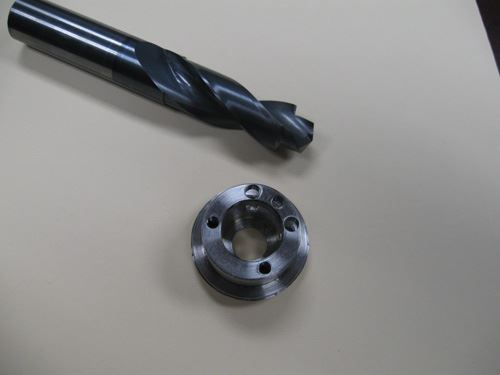
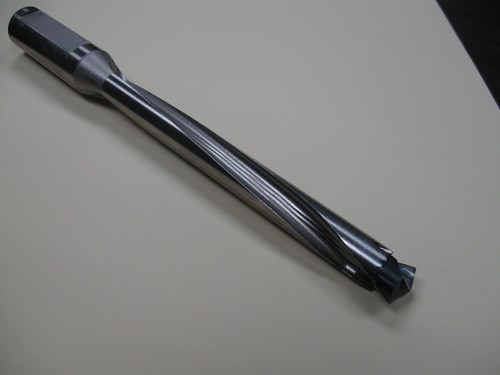
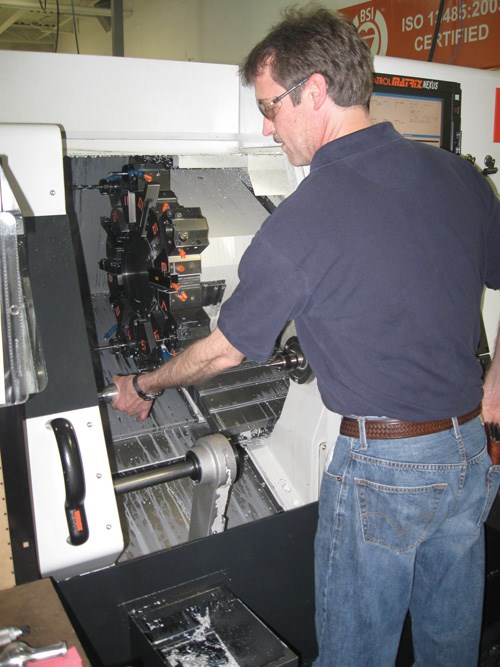
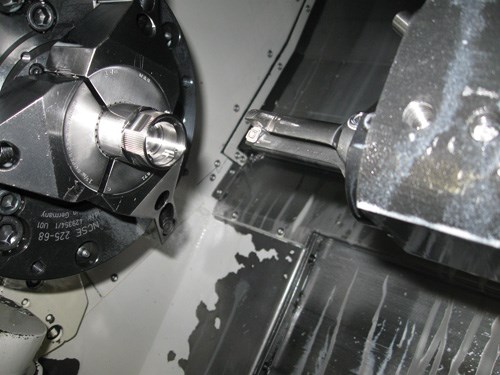
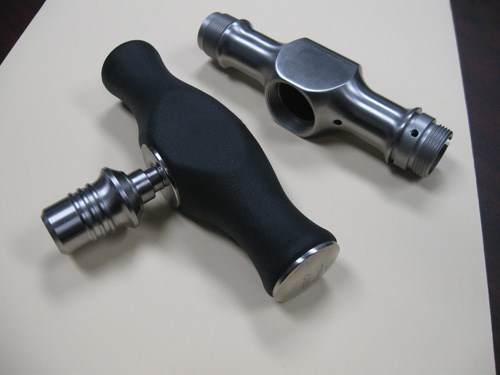









.png;maxWidth=300;quality=90)





.png;maxWidth=300;quality=90)





.png;maxWidth=300;quality=90)







